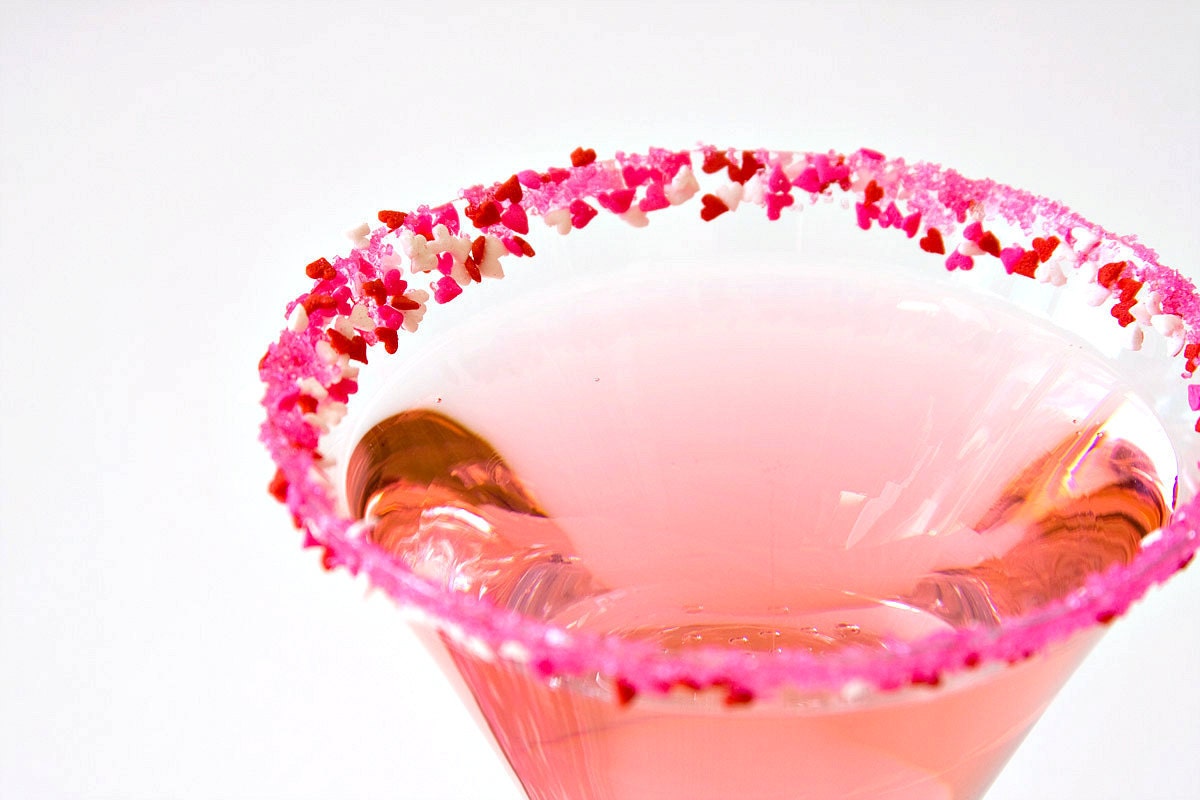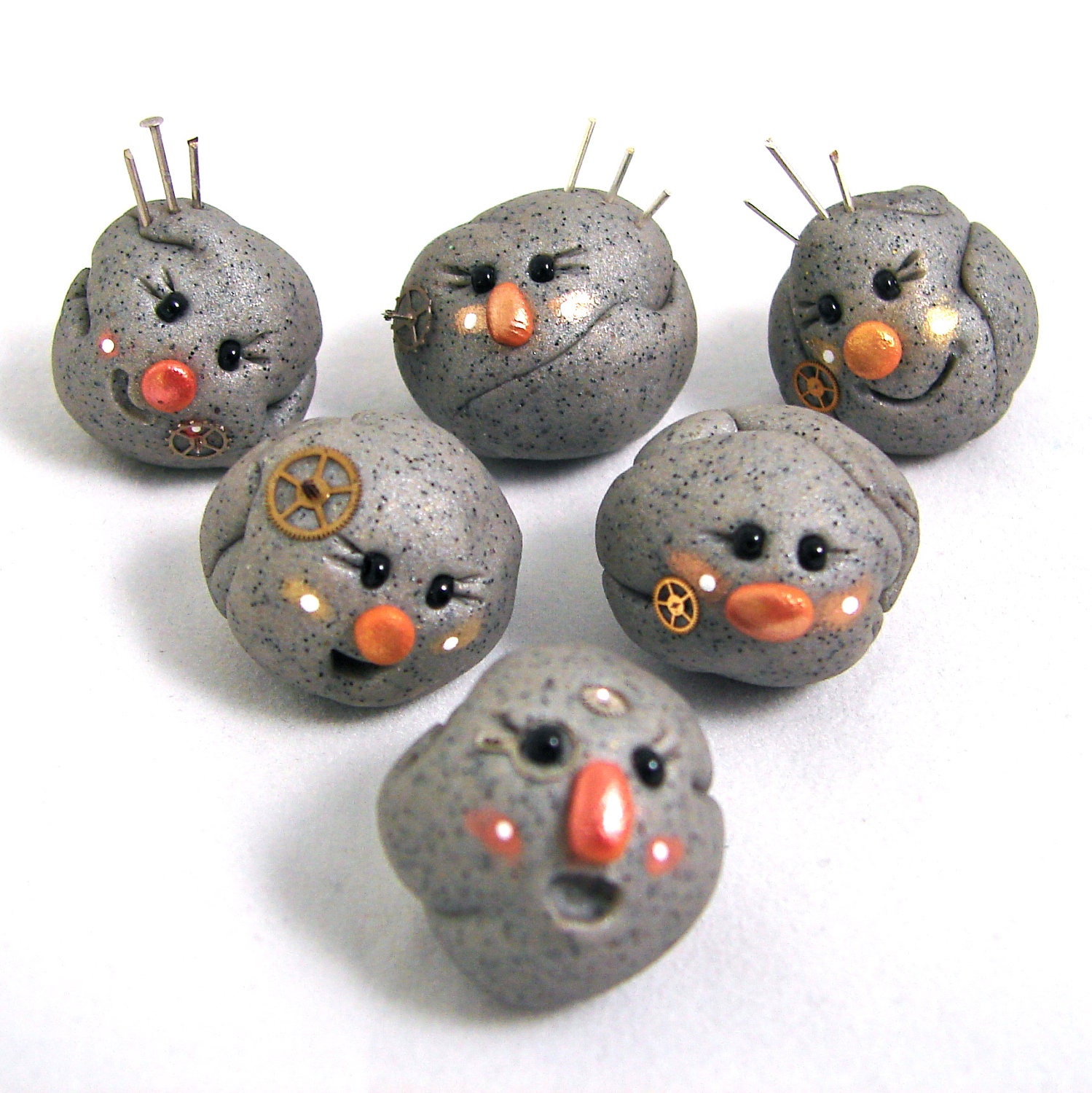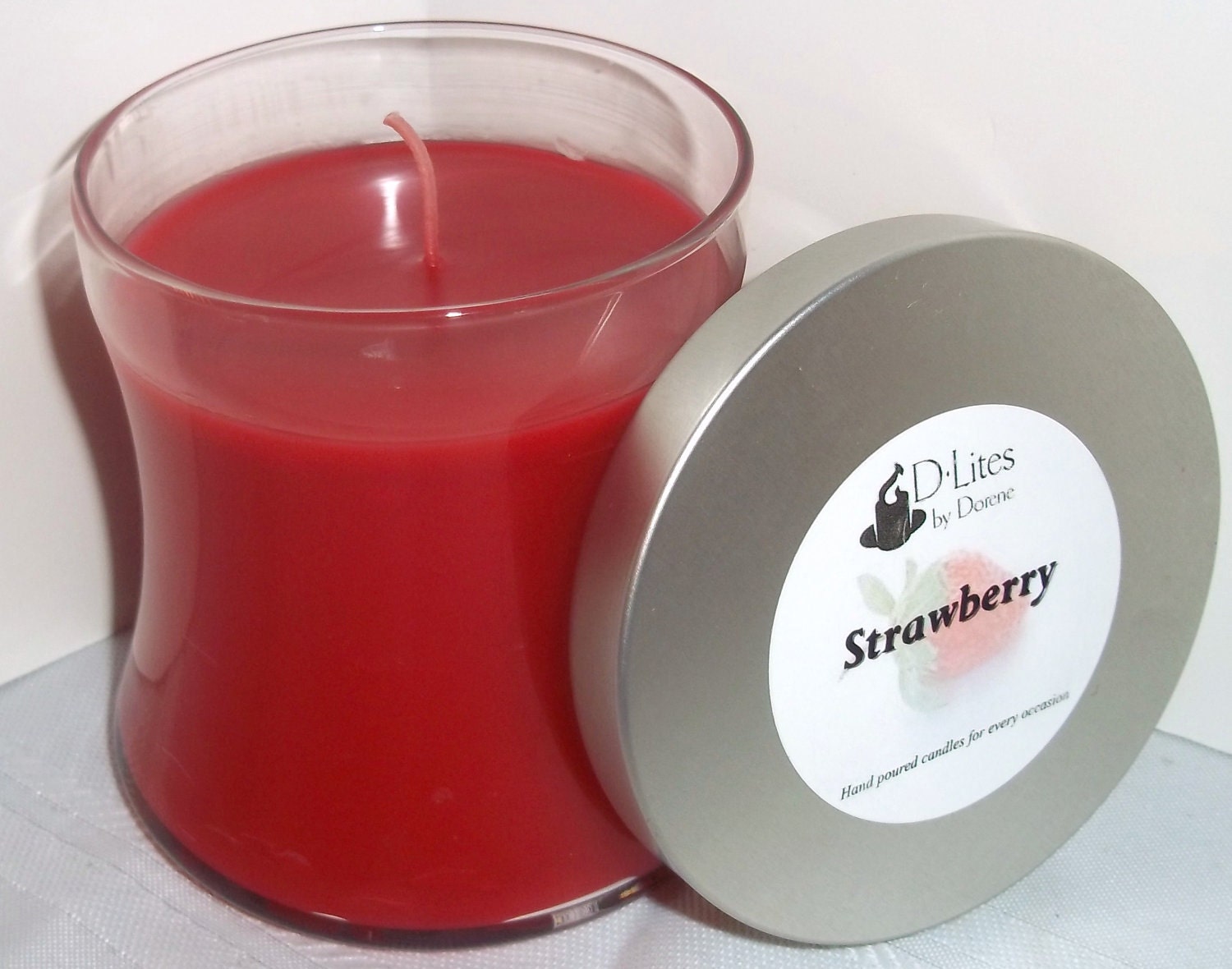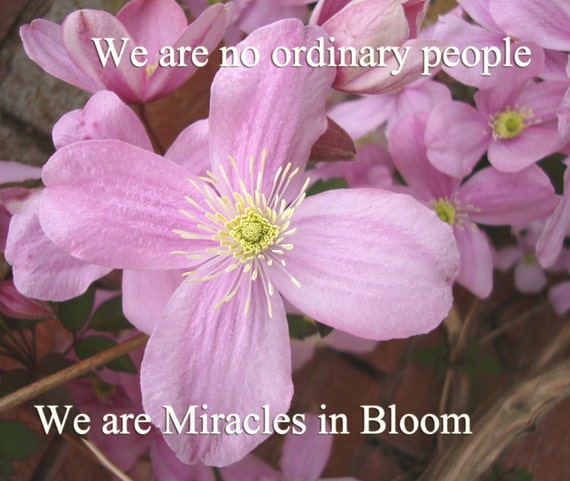In a previous post I discussed the importance of having a blog for your online shop or business. But having a blog is not enough; you actually have to post to your blog regularly to retain the attention of your audience. But writing for the sake of having new content can actually work against you. If a reader feels that your blog is frivolous or unprofessional, they will easily be turned away.
Think for a moment, do you care if Etsy’s graphic designer got a new puppy? Or are you more interested in how your shop's new user interface will influence your sales? Do you care that the Artfire CEO’s grandson just learned to walk, or are you more interested in their new advertising campaign that will promote your shop to a wider market (one can hope)
Picture this scenario: You are introduced to a stranger as a person who is really into fashion
Stranger 1: “Hi my name is so-and-so, buy my beautiful handmade piece of art”
Stranger 2: “Did you know that the color ‘x’ is trending for this fall? You don’t even have to go all out to look fashionable. You can turn your simple work outfit of slacks and shirt into a fashion statement by accessorizing with simple yet colorful add-ons. You can add a pop of color by wearing ‘x’ colored shoes, or perhaps a piece of jewelry with an ‘x’ color focal stone like this ring on my hand. I actually handcraft and sell these. You can view them in my shop (hand over business card)
Now these are both exaggerated scenarios, but we frequently see these approaches in advertising. Stranger #1 likely rubbed you the wrong way, earning unspoken thoughts of ‘go away’ while Stranger #2 likely caught your interest enough to make your visit their online shop.
The second stranger evoked the response you should aim for in your blog posts. If you engage your audience with your post, you can capture their interest, and then add your subtle marketing pitch. Your reader will be fascinated rather than turned off by your post and therefore be interested in what you have to share. This is more likely to result in the mouse-click into your shop
This is a very useful and reusable topic for jewelry and clothing sellers. Buyers are always looking for fashion tips and trending themes. Keep your blog posts up-to-date with the latest styles, and link an example from your shop after the post
 DIY posts loosely related to your product
DIY posts loosely related to your product
Readers love Do It Yourself posts. So why not show your reader how to create or do something loosely related to your product, and of course link your item after the post. If you sell themed party invitations, create a post showing how to do a themed kid's birthday party. And if you sell spices, perhaps do series of posts on interesting ways to use your spices
Tutorials showing your product in action
If you sell art-related supplies, perhaps show a tutorial on how to make a bracelet or necklace. At the end of the tutorial you can include a well-placed link guiding the readers to your shop to purchase the supplies used in the tutorial. Even craftier would be including product links when each item comes up within the tutorial. So when you introduce your ‘soft sterling silver wire’ the words link to the product in your shop
A look into YOUR process
If your methods are special or unique, give the reader a look into process. Not everyone knows what a glass cutting station looks like, nor how a glass kiln operates. Give your reader a look into your studio setup, and the work you go through on a regular basis. These are fascinating to read about and will make your art more realistic to the reader. And of course link a shop section or item at the end, to give your reader a look at the products created by your process
 The story behind your product
The story behind your product
Many products have a story to tell. This can range from what inspired the product, how they came about, or a story that the actual item has to tell. You capture the readers interest by bringing the product to life before their eyes. With the story complete they will want to see the product, and hopefully also buy the product. This idea is illustrated beautifully by Katie from Kater’s Acres in her post featuring her new steampunk pet rocks. She spins a tale of fantasy how Parker found an old abandoned… (don’t let me spoil the story, click HERE to read)
 Featured Item Set or Product Theme
Featured Item Set or Product Theme
Do you have a theme to your products? For example, are you rolling out a new line of products inspired by an overall color or season? If so, tell the story and link a number of your products. If done correctly, say once a month, this is a fun way to capture readers’ attention and introduce your new line at the same time. Fragrence of the Month by D’lights By Dorene is a perfect illustration of this idea. Strawberries, my favorite, were featured as June's Fragrance of the Month. In this post she discusses a bit of shop history, strawberries, and how it inspired a number of new items in her shop. And of course the post is dotted with a few well placed item images giving the reader a chance to view and purchase a strawberry scented candle.
Sales and Shop Discounts
This can be a rather touchy topic. Sales may come across as spammy and 'buy this' for readers unfamiliar with your shop, but a welcome concept to potential buyers and past customers. I recommend limiting the sale related posts to the holiday season, and instead sharing discount information with your mailing list via your shop newsletter. Remember, a buyer needs to feel that they 'earned' something with your sale, and so this cannot be a frequent occurence. If a buyer has to WORK for a discount, they are more likely to appreciate it. (I will discuss this concept down the line)
 Giveaways
Giveaways
You knew this one was coming, but there is a reason I left this post for last. Giveaways tend to generate traffic, but not neccessarily the type of traffic that you WANT. Giveaways tend to atract freebie-hunters and internet browsers looking to get 'something for nothing'. Yes they will follow your blog, heart your shop, even join your newsletter; but they are likely doing this for the sake of entering your contest and may never glance at your shop again. On the off-chance that you do find a true customer with this method, giveaways can be entertained once every now and then. If your readers get acustomed to seeing 'free' they will be discouraged for spending money on your shop. After all, why pay for something if you can wait to get it free?
Now these were just some examples that I could think of for creating quality posts to interest your readers. Do not limit your posts to the above, and be sure to mix and match ideas. Remember, NOT every post has to have a sales pitch. You are looking to build a following of interested fans after all. Do you have additional ideas for creating captivating blog posts? If so I (and other readers) would love to read about them, so leave a comment below. Please include your niche/what you sell, and your advice for artists in your field.
This post was brought to you by Leah from MagicByLeah
MagicByLeah is a place where fantasy and magic come to life in polymer clay.
If you'd like to read more about Leah visit her website: MagicByLeah.com
Limit the Personal Posts
While your blog IS about you, the focus should remain on your shop or business. That means you should limit the posts relating to your personal life, family and pets. The harsh truth is that customers may not be all that interested in your personal life. You don’t have to avoid the topic completely. Instead seek to find a good balance.Think for a moment, do you care if Etsy’s graphic designer got a new puppy? Or are you more interested in how your shop's new user interface will influence your sales? Do you care that the Artfire CEO’s grandson just learned to walk, or are you more interested in their new advertising campaign that will promote your shop to a wider market (one can hope)
Avoid ‘Spammy’ Marketing Posts
People hate the feeling of being overly marketed to. HOW you market will make all the difference. If I come across a blog with nothing but ‘buy this’ or ‘purchase that’ I will leave in a hurry, and maybe even un-follow. If your blog is all about making that sale, readers are not likely to turn in to fans or customers.So what CAN you blog about?
You can certainly blog about your items, as long as the posts are engaging, with the marketing aspect being more subtle. You have to connect with your readers on a level that captures their attention and gains their confidence and trust before attempting to turn them into a buyer.Picture this scenario: You are introduced to a stranger as a person who is really into fashion
Stranger 1: “Hi my name is so-and-so, buy my beautiful handmade piece of art”
Stranger 2: “Did you know that the color ‘x’ is trending for this fall? You don’t even have to go all out to look fashionable. You can turn your simple work outfit of slacks and shirt into a fashion statement by accessorizing with simple yet colorful add-ons. You can add a pop of color by wearing ‘x’ colored shoes, or perhaps a piece of jewelry with an ‘x’ color focal stone like this ring on my hand. I actually handcraft and sell these. You can view them in my shop (hand over business card)
Now these are both exaggerated scenarios, but we frequently see these approaches in advertising. Stranger #1 likely rubbed you the wrong way, earning unspoken thoughts of ‘go away’ while Stranger #2 likely caught your interest enough to make your visit their online shop.
The second stranger evoked the response you should aim for in your blog posts. If you engage your audience with your post, you can capture their interest, and then add your subtle marketing pitch. Your reader will be fascinated rather than turned off by your post and therefore be interested in what you have to share. This is more likely to result in the mouse-click into your shop
Post Ideas to Capture the Readers Interest:
(with subtle marketing undertones)
Fashion Tips and TrendsThis is a very useful and reusable topic for jewelry and clothing sellers. Buyers are always looking for fashion tips and trending themes. Keep your blog posts up-to-date with the latest styles, and link an example from your shop after the post
 DIY posts loosely related to your product
DIY posts loosely related to your productReaders love Do It Yourself posts. So why not show your reader how to create or do something loosely related to your product, and of course link your item after the post. If you sell themed party invitations, create a post showing how to do a themed kid's birthday party. And if you sell spices, perhaps do series of posts on interesting ways to use your spices
Tutorials showing your product in action
If you sell art-related supplies, perhaps show a tutorial on how to make a bracelet or necklace. At the end of the tutorial you can include a well-placed link guiding the readers to your shop to purchase the supplies used in the tutorial. Even craftier would be including product links when each item comes up within the tutorial. So when you introduce your ‘soft sterling silver wire’ the words link to the product in your shop
A look into YOUR process
If your methods are special or unique, give the reader a look into process. Not everyone knows what a glass cutting station looks like, nor how a glass kiln operates. Give your reader a look into your studio setup, and the work you go through on a regular basis. These are fascinating to read about and will make your art more realistic to the reader. And of course link a shop section or item at the end, to give your reader a look at the products created by your process
 The story behind your product
The story behind your productMany products have a story to tell. This can range from what inspired the product, how they came about, or a story that the actual item has to tell. You capture the readers interest by bringing the product to life before their eyes. With the story complete they will want to see the product, and hopefully also buy the product. This idea is illustrated beautifully by Katie from Kater’s Acres in her post featuring her new steampunk pet rocks. She spins a tale of fantasy how Parker found an old abandoned… (don’t let me spoil the story, click HERE to read)
 Featured Item Set or Product Theme
Featured Item Set or Product ThemeDo you have a theme to your products? For example, are you rolling out a new line of products inspired by an overall color or season? If so, tell the story and link a number of your products. If done correctly, say once a month, this is a fun way to capture readers’ attention and introduce your new line at the same time. Fragrence of the Month by D’lights By Dorene is a perfect illustration of this idea. Strawberries, my favorite, were featured as June's Fragrance of the Month. In this post she discusses a bit of shop history, strawberries, and how it inspired a number of new items in her shop. And of course the post is dotted with a few well placed item images giving the reader a chance to view and purchase a strawberry scented candle.
Sales and Shop Discounts
This can be a rather touchy topic. Sales may come across as spammy and 'buy this' for readers unfamiliar with your shop, but a welcome concept to potential buyers and past customers. I recommend limiting the sale related posts to the holiday season, and instead sharing discount information with your mailing list via your shop newsletter. Remember, a buyer needs to feel that they 'earned' something with your sale, and so this cannot be a frequent occurence. If a buyer has to WORK for a discount, they are more likely to appreciate it. (I will discuss this concept down the line)
 Giveaways
GiveawaysYou knew this one was coming, but there is a reason I left this post for last. Giveaways tend to generate traffic, but not neccessarily the type of traffic that you WANT. Giveaways tend to atract freebie-hunters and internet browsers looking to get 'something for nothing'. Yes they will follow your blog, heart your shop, even join your newsletter; but they are likely doing this for the sake of entering your contest and may never glance at your shop again. On the off-chance that you do find a true customer with this method, giveaways can be entertained once every now and then. If your readers get acustomed to seeing 'free' they will be discouraged for spending money on your shop. After all, why pay for something if you can wait to get it free?
Now these were just some examples that I could think of for creating quality posts to interest your readers. Do not limit your posts to the above, and be sure to mix and match ideas. Remember, NOT every post has to have a sales pitch. You are looking to build a following of interested fans after all. Do you have additional ideas for creating captivating blog posts? If so I (and other readers) would love to read about them, so leave a comment below. Please include your niche/what you sell, and your advice for artists in your field.
This post was brought to you by Leah from MagicByLeah
MagicByLeah is a place where fantasy and magic come to life in polymer clay.
If you'd like to read more about Leah visit her website: MagicByLeah.com








 Used to be, you would build a shop, fill it with art, and
the people would come. Not anymore
Used to be, you would build a shop, fill it with art, and
the people would come. Not anymore A blog provides you with a means to communicate with your
buyers. All too often a potential customer will browse the internet and come
across your shop or site when not in a buying mood. They will admire your shop,
and then they leave.
A blog provides you with a means to communicate with your
buyers. All too often a potential customer will browse the internet and come
across your shop or site when not in a buying mood. They will admire your shop,
and then they leave.




